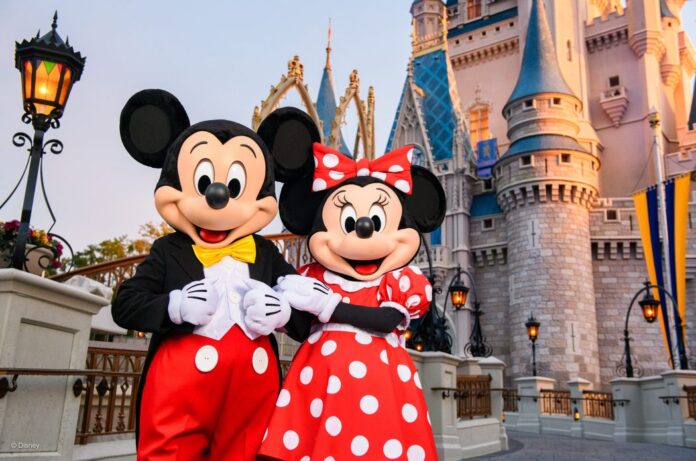Disney (DIS -1.10%) released fiscal first-quarter earnings on Wednesday morning, and the market responded with a loud “meh.” After opening up with a brief pop, the stock quickly fell and was trading down about 1% for most of the session.
Few other companies have so many evident competitive advantages yet have struggled so much on the stock market, as the stock has been basically flat over the last decade.
Some investors believe Disney is finally turning the corner after several years of underwhelming returns. After all, its streaming business is now profitable, and it fully owns Hulu. It’s also set to launch the flagship ESPN streaming service in the fall.
There’s certainly potential in the stock given its bevy of assets and the recent performance of streaming leader Netflix, which shows that the streaming market may be even bigger than investors had believed.
However, there are three things Disney needs to demonstrate before it’s convincingly on a path to growth.

Image source: Disney.
1. It needs to grow its streaming audience
Disney has succeeded in turning its streaming business profitable, but growth is still an issue. In a quarter when Netflix added nearly 20 million subscribers to its streaming service, Disney lost 700,000 on Disney+ and added 1.6 million on Hulu, a net gain of 900,000. It also raised prices, so streaming revenue was up during the quarter even though subscriber growth was minimal.
Disney’s record over the last year is more impressive as it added 13.3 million subscribers to Disney+ over the last four quarters, though that number may have been boosted by the new bundle with Hulu. It also added 3.9 million subscribers to Hulu.
Disney’s streaming strategy has long seemed muddled. Netflix, by comparison, has stated for years that it wants to provide a wide range of video entertainment options so it has something for everyone.
The value proposition with Disney’s multiple options seems less clear. Owning Hulu outright gave Disney a chance to merge the two services together, making the customer experience simpler and meaning it only has to advertise and find programming for one service. The current bundle can feel clunky and unnecessary, and Disney seems poised to make a similar mistake with Fubo and Hulu + Live TV, keeping them as separate services rather than combining them.
Its streaming proposition could grow even messier when it launches ESPN to streaming as it seems poised to own at least four separate streaming services, bundled or not.
The recent slide in Disney subs might be a blip, but I’d like to see steadier growth from a segment that is supposed to represent the company’s future.
2. It needs to keep leading the box office
The biggest bright spot in Disney’s first-quarter report was its performance at the box office. It flipped a loss in its content sales/licensing business of $224 million to a profit of $312 million, largely due to the success of Moana 2 and Mufasa: The Lion King.
Tentpole franchise productions like Moana are the biggest key to Disney’s flywheel business model. The success of those movies helps drive theme park visits, purchases of products like toys, and subscriptions for its streaming services.
Disney paid $71 billion for Fox’s entertainment in 2019 and has struggled to get its money’s worth. Cranking out box office hits with that intellectual property and others is the best way to make it pay off.
Theatrical releases also have a lot of leverage, as a hit can make a large profit, while a bust will lose money. Not every movie will be a hit, but Disney should be generating a solid profit from the content sales and licensing segment every quarter.
3. Can it remain the leader in sports?
It’s a brave new world for ESPN. The company’s dominance of the cable ecosystem has faded in the streaming era, and it now faces competition from tech giants, as well as traditional media companies.
Meanwhile, the price of sports content continues to go up due to the popularity of live sports and competition with the deep-pocketed tech giants.
The launch of the ESPN flagship service later this year will be a crucial test for the company. Not only does Disney need to attract a substantial audience to ESPN, but it also needs to be profitable and show that it can grow that profit. In order to do that, ESPN may need to get back its roots and connect with audiences through studio programming like SportsCenter in addition to live sports.
The future of Disney may hinge on ESPN more than anything else, as it’s long been a prized cash cow for the company, and its decline has been a major reason for the stock’s struggles over the last decade.
We won’t have an answer to that for at least a few quarters after its launch, but its success is a key imperative for CEO Bob Iger, who is expected to retire next year.
Disney’s guidance calls for high-single-digit earnings-per-share growth in the year, which is fine, but not enough to excite investors. If the company executes across all aspects of business, it could grow profits much faster than that. The potential is still there, but Disney needs to deliver in the three areas above to give shareholders the return they’ve been expecting.



